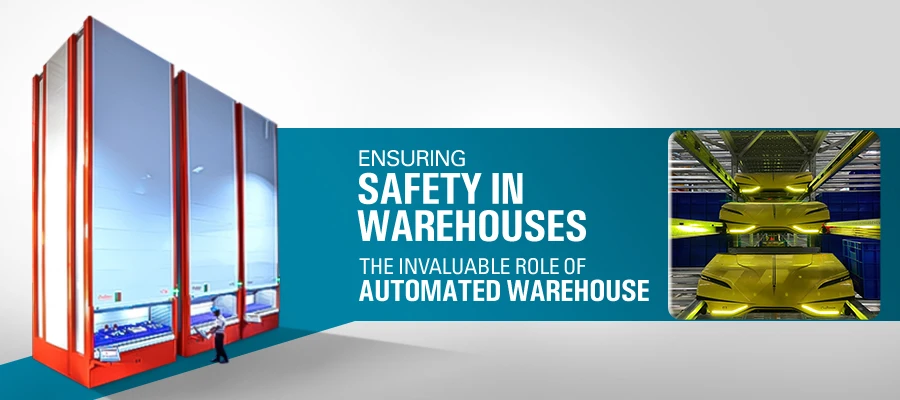Harnessing Efficiency: Warehouse Automation in the Solar Energy Revolution
In today's rapidly advancing world, the solar energy sector stands at the forefront of sustainable innovation.
Read More
In the dynamic realm of retail, the integration of automation into warehouses transcends mere technological advancement; it symbolizes a dedicated commitment to fostering a secure working environment. This blog delves into the pivotal role of automated warehouses in safeguarding both employees and the goods they handle, emphasizing the symbiotic relationship between technological precision and occupational safety.
Automated warehouses are meticulously crafted for precision and accuracy, employing cutting-edge technology to minimize errors across diverse tasks, from inventory management to order fulfillment. By relying on automated sorting systems and robotic pickers, these warehouses not only enhance operational efficiency but also serve as bulwarks against mistakes that could lead to accidents or damaged goods.
A paramount concern in traditional warehouses-the risk of workplace injuries stemming from manual handling-is effectively alleviated through automation. By mechanizing tasks involving heavy lifting or repetitive motions, robotic systems shoulder the burden of moving and transporting goods, thereby mitigating the physical strain on human workers. This reduction in manual handling risks not only enhances safety but also contributes to the overall well-being of the workforce.
Our cranes and shuttles provide an integration of sophisticated sensors and monitoring systems in automated warehouses, facilitating enhanced emergency response capabilities. These systems can detect irregularities or emergencies in real-time, allowing swift and proactive responses to mitigate potential risks. Such a proactive approach ensures a safer environment for everyone involved in warehouse operations.Our Pallet shuttle systems are incorporated with Stacker Cranes for higher density storage racking.
Automation, with its advanced technologies like collision detection systems and smart routing algorithms, plays a pivotal role in minimizing workplace accidents. The precise coordination of robotic movements and the ability to predict potential collisions contribute to a safer working environment. By eliminating or reducing the occurrence of accidents, automated warehouses cultivate a culture of safety essential for long-term success.
Contrary to fears of job replacement, automation is framed as a means of empowering human workers. By automating routine and hazardous tasks, employees are liberated to concentrate on more strategic and creative facets of their roles. This empowerment not only enhances job satisfaction but also diminishes the likelihood of fatigue-related accidents, fostering a positive work environment within automated warehouses. The Wms Software aims to ensure that you can provide the right goods at the right time while optimising efficiency, cost and tracking details accurately.
Moreover, these warehouses adhere to strict safety standards and regulations, ensuring compliance with industry norms. The integration of automation creates a structured and secure work environment, shielding both employees and the business from legal and financial repercussions associated with safety violations.
Conclusion
In conclusion, an automated warehouse is not merely a technologically advanced space but a sanctuary prioritizing safety for both employees and goods. The inherent precision and accuracy of automation, coupled with the reduction of manual handling risks, establish a workplace where safety takes precedence. The enhanced emergency response capabilities, along with the minimization of accidents, forge a safety-centric culture vital for the well-being of the workforce. By empowering employees and ensuring compliance with safety regulations, automated warehouses chart a course towards a future where safety seamlessly aligns with efficiency in the ever-evolving landscape of retail.